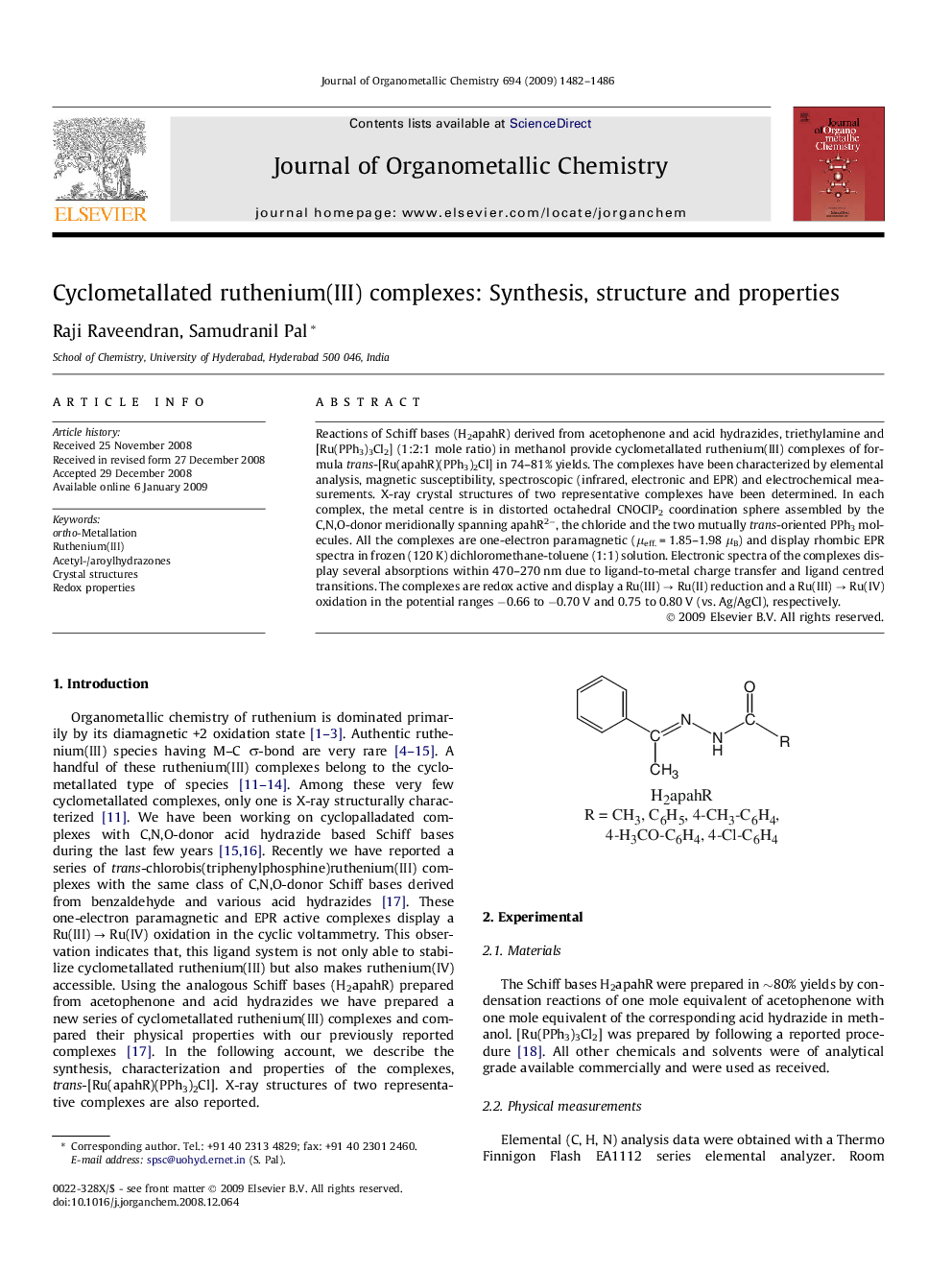| کد مقاله | کد نشریه | سال انتشار | مقاله انگلیسی | نسخه تمام متن |
|---|---|---|---|---|
| 1325270 | 1499945 | 2009 | 5 صفحه PDF | دانلود رایگان |

Reactions of Schiff bases (H2apahR) derived from acetophenone and acid hydrazides, triethylamine and [Ru(PPh3)3Cl2] (1:2:1 mole ratio) in methanol provide cyclometallated ruthenium(III) complexes of formula trans-[Ru(apahR)(PPh3)2Cl] in 74–81% yields. The complexes have been characterized by elemental analysis, magnetic susceptibility, spectroscopic (infrared, electronic and EPR) and electrochemical measurements. X-ray crystal structures of two representative complexes have been determined. In each complex, the metal centre is in distorted octahedral CNOClP2 coordination sphere assembled by the C,N,O-donor meridionally spanning apahR2−, the chloride and the two mutually trans-oriented PPh3 molecules. All the complexes are one-electron paramagnetic (μeff. = 1.85–1.98 μB) and display rhombic EPR spectra in frozen (120 K) dichloromethane-toluene (1:1) solution. Electronic spectra of the complexes display several absorptions within 470–270 nm due to ligand-to-metal charge transfer and ligand centred transitions. The complexes are redox active and display a Ru(III) → Ru(II) reduction and a Ru(III) → Ru(IV) oxidation in the potential ranges −0.66 to −0.70 V and 0.75 to 0.80 V (vs. Ag/AgCl), respectively.
Cyclometallated ruthenium(III) complexes with Schiff bases derived from acetophenone and acid hydrazides are described. The complexes are one-electron paramagnetic and display rhombic EPR spectra. The redox active complexes show a Ru(III) → Ru(II) reduction and a Ru(III) → Ru(IV) oxidation.Figure optionsDownload as PowerPoint slide
Journal: Journal of Organometallic Chemistry - Volume 694, Issues 9–10, 15 April 2009, Pages 1482–1486